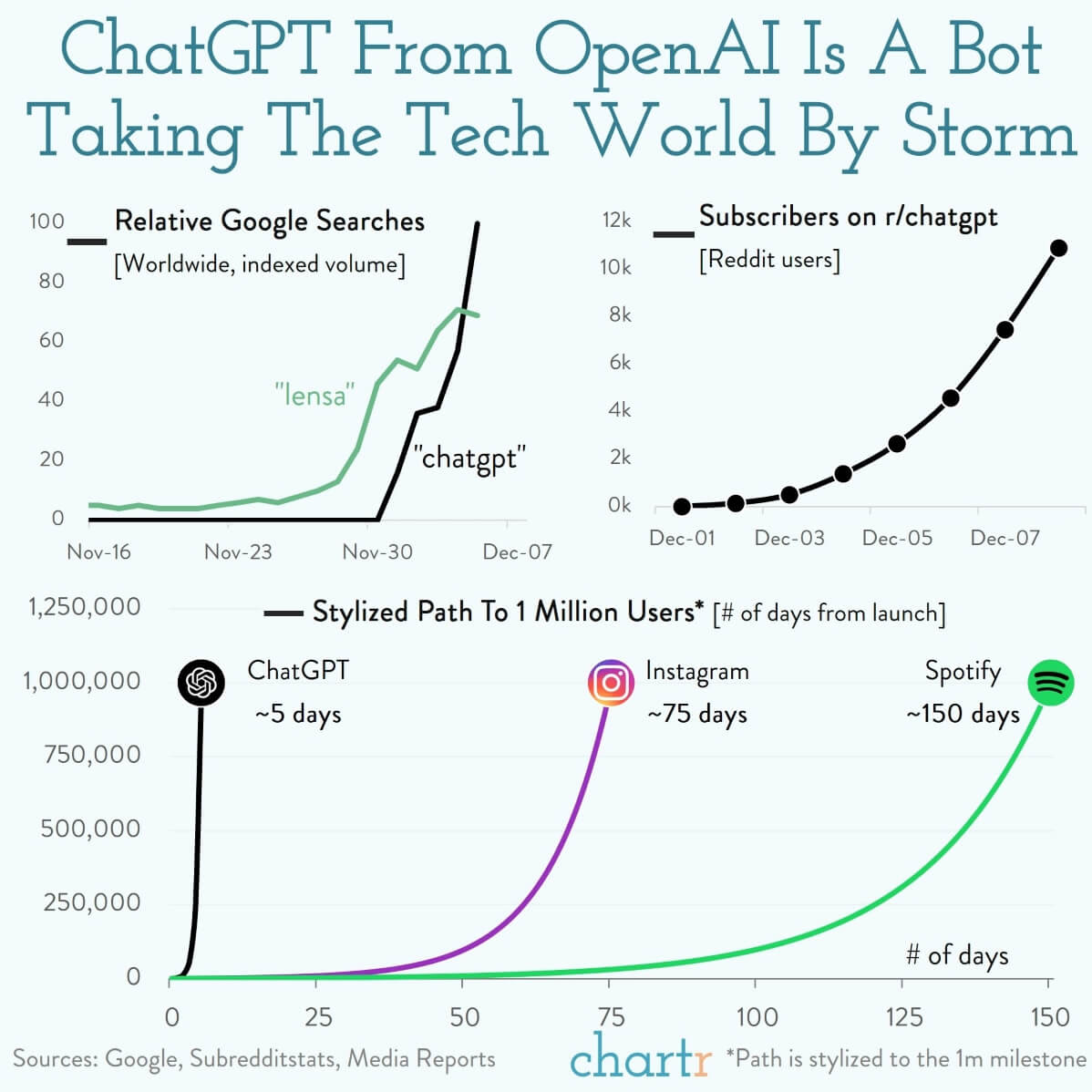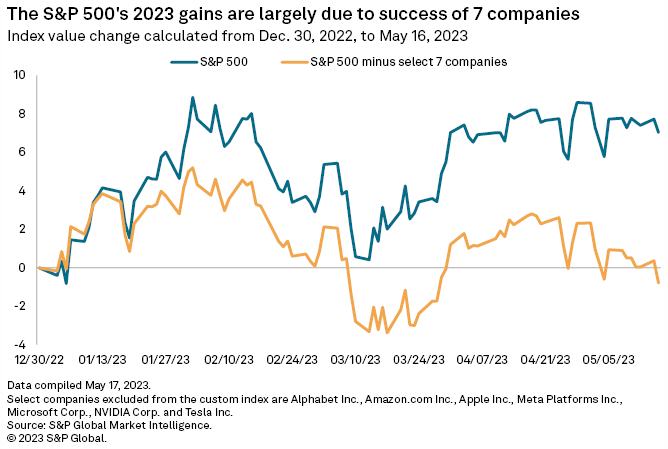Stock investing has once again caught many people’s attention in 2023 — after coming out from a bear market drawdown just last year. Specifically, investing in Artificial Intelligence (AI) companies.
Therefore, this AI Investing guide aims to help you better understand and navigate the AI space, while taking advantage of this trend and profiting from the markets.
- What is AI?
- Why are investors suddenly so interested in AI?
- How should you go about understanding and dissecting different AI companies?
- Which are the AI companies to invest in?
If you have any of these questions lingering in your mind, you have come to the right place. Read on to find out the answers!
Table Of Contents:
Why Are Investors Rushing to Invest in AI Now?
How to Invest in AI Companies?
Why Are Investors Rushing to Invest in AI Now?
Many investors would argue that AI is not something new. In fact, it has taken root in most of our lives for some time now, from the recommended videos on your YouTube homepage to voice assistants like Siri, and even your navigation apps (like Google Maps) that suggest to you the optimal route.
So why now? Why did all the hype around AI only surface in 2023?
Simply put, we believe that the incremental progress of AI behind-the-scenes was underestimated, and the general public had the first taste of a leap in AI capabilities when ChatGPT-3 was made mainstream in November 2022.

ChatGPT shocked the world with its incredible ability to generate human-like responses while taking into account previous conversational prompts and context.
The emergence of this tool spread like wildfire, as students sought answers for their assignments, creatives had another outlet for brainstorming ideas, and teachers created lesson plans from scratch just with a few prompts. The possibilities seemed endless, which probably catalyzed their growth to a million users in five days.
Post ChatGPT, many companies felt the pressure to unveil their in-house AI capabilities to the public, and the following are just a few examples:
- Google’s Bard — a conversational generative AI chatbot (ChatGPT’s rival)
- AIVA — generates original music to accompany various media content
- Lumen5 — transforms text-based content to videos
- Adobe’s Firefly — generates images from text
- FinChat — “equity analyst assistant” chatbot
Given the plethora of AI use cases today, it’s hard to imagine a world where these tools are taken away from us.
The 2023 Stock Market

Notice any similarities between the Top 7 stocks (Alphabet, Amazon, Apple, Meta, Microsoft, Nvidia, Tesla) that contributed to the gains of the S&P 500 in 2023?
They are all involved with AI in one form or another.
This then begs the question, should I invest in AI stocks today?
Should I Invest in AI Stocks?
AI as a term, has many different representations. You ask ten investors of their opinion on AI, you might potentially get ten different perspectives and answers. However, we are sure that AI is no longer this mythical creature in the experiment lab, but has real-world implications - to businesses from all facets of life.
A real-world example of such a partnership would be between Airbus and Palantir. Currently, this partnership has enhanced their system, Skywise, which is an open aviation data platform to generate insights from the data collected by aircraft systems.
This helps airlines reduce maintenance costs by preventing delays and forecasting defect patterns and failures via AI models.
This is delivering real potential to significantly reduce the cost structure in many different industries via the help of AI, enhancing the bottom line of the companies (make them more profitable), thereby increasing shareholder value.
That said, before answering the question of whether you should invest in AI-related stocks, let’s take a look at the potential economics of this industry.
According to Precedence Research, the global AI market size is expected to hit US$1.5 trillion by 2030, and that is a CAGR of 38.1% from 2022 to 2030.
A CAGR of 38.1% in this decade! My goodness!
It is without a doubt that AI companies sit on this incredible tailwind of growth and companies that are able to exploit this trend will come out extremely profitable.
However, despite this phenomenal tailwind, some analysts on the sidelines are cautioning investors against this wave of hype around AI.
The chief investment strategist of Bank of America (BofA) calls AI a “baby bubble” for now, which echoes the dot-com era in the 2000s.
Although there is a certain element of euphoria currently present in the AI market, in every bubble, there will be many that crashes significantly (because they do not have the company fundamentals to back the stock), but a handful of winners will emerge and lead the next wave of innovation that allows investors to profit handsomely from it.
It is very much like how Amazon and Booking.com survived and thrived after the dot-com era, and ultimately, it’s about identifying the potential winners and riding the new wave with them.
It is not whether you should invest in AI, but when and how you should take charge of this investment in AI today.
How to Invest in AI Companies?
When we talk about investing in AI companies, we need to first know how to identify whether this company is really a part of the AI value chain, or whether the management team is just jumping onto this AI bandwagon.
Source: Wall Street Journal
We need to be extra careful in this pumped-up environment where investors get overly excited, while founders and executives are even more excited to sell their story to the market.
So, what does AI even mean?
According to the Oxford Dictionary, AI is the capacity of computers to exhibit or simulate intelligent behaviors.
That doesn’t help much with our understanding of AI companies does it?
Under the large umbrella term of AI, there are many different shapes and forms of how computers are able to exhibit “intelligent behaviors”.
From an investor’s perspective, we are probably more interested in how these AI companies are going to generate profits — and there seems to be a framework to dissect the AI value chain.
The Artificial Intelligence Value Chain
Adopting this framework from WisdomTree, there are three main categories of companies in the AI space, namely: Enablers, Enhancers and Engagers.
(WisdomTree is a Global Financial Innovator that offers ETFs/ETPs with a total of $93.4B Asset-under-management combined)
Enablers
- This group of companies will supply the components (both hardware and software) that support the processes required by AI solutions
- Examples of such companies include NVIDIA (NVDA) and Taiwan Semiconductor Manufacturing Company (TSMC)
- NVIDIA is in the business of designing high-end GPUs (e.g. H100) that are required for delivering raw computing power for the AI firms, coupled with NVIDIA’s in-house software stack (CUDA) for deep learning purposes
- TSMC, on the other hand, is the enabler of NVIDIA, as they are currently the only chip manufacturer that has the capacity and capability to meet NVIDIA’s demands
Enhancers
- This group of companies provide the applications or software stack capable of utilizing and manipulating large amounts of data to solve real-world problems
- Examples of such companies include Palantir (PLTR) and UiPath (PATH)
- Palantir leverages on their proprietary software to build a digital twin based on their client’s data infrastructure to assist in operations and decision making
- UiPath adopts a variety of methods to help companies automate their business processes as much and as efficient as possible
Engagers
- This group of companies are at the forefront of AI-powered products and services. They are at the last stage of the value chain, and their AI-solutions tend to be customer-facing by nature.
- Examples of such companies include Meta Platforms (META) and Amazon (AMZN)
- Meta is a social media company where user engagement is a top priority and the way they adopt AI is via their discovery engine, to keep users hooked to the platform
- Amazon employs AI via providing a personalized product recommendation page by collecting the user’s behavior and optimization of their warehouse and inventories
A Simple Way to Invest in AI
After walking you through the entire AI value chain, some of you might be overwhelmed by the intricacies and complexities of the AI space.
Fear not, for those of you who are still interested in increasing your portfolio exposure towards the AI sector, there are still a myriad of financial instruments out there that will do the trick, and one of the most common ways is via an Exchange-Traded Fund (ETF).
An ETF is basically a pool of securities that are bundled together that trades on the stock exchange. Specifically, we are interested in looking for thematic ETFs that focus on owning securities that are in the AI arena.
Below are some examples of AI-themed ETF you might wish to consider:
*All the data provided below is accurate as of 15/06/2023
Invesco QQQ (QQQ)
QQQ delivers exposure to companies that are at the forefront of transformative, long-term themes such as augmented reality, cloud computing, big data, electric vehicles, and more.
Asset Under Management: $198.6 Billion
Top Holdings Percentage: Microsoft (12.9%), Apple (12.15%), Nvidia (6.84%)
Expense Ratio: 0.2%
iShares Exponential Technologies ETF (XT)
XT seeks to track the investment results of an index composed of developed and emerging market companies that create or use exponential technologies.
Asset Under Management: $3.35 Billion
Top Holdings Percentage: NVIDIA (1.12%), Meta (1.05%), Palantir (1%)
Expense Ratio: 0.46%
Global X Robotics & Artificial Intelligence ETF (BOTZ)
BOTZ seeks to invest in companies that potentially stand to benefit from the increased adoption and utilization of robotics and AI.
Asset Under Management: $2.46 Billion
Top Holdings Percentage: NVIDIA (11.98%), Intuitive Surgical (9.18%), ABB (7.67%)
Expense Ratio: 0.69%
KraneShares CSI China Internet ETF (KWEB)
KWEB consists of China-based companies whose primary business or businesses are focused on internet and internet-related technology.
Asset Under Management: $4.99 Billion
Top Holdings Percentage: Tencent (9.52%), Alibaba (8.74%), Meituan (7.78%)
Expense Ratio: 0.69%
Downsides of an AI ETF
However, do note that there is no “perfect” investment instrument out there, and getting exposure to such thematic ETFs runs its own set of risks as well.
First, compared to a DIY portfolio, you’ll need to pay the exorbitant fees (via expense ratios), which would inevitably eat into your overall investment returns. You are essentially paying the portfolio manager annually to “manage” this AI section of your portfolio.
Second, you do not have the flexibility to make any adjustments to the underlying securities because you are basically outsourcing this job scope to the ETF manager. You can only decide to buy, hold, or sell this ETF, and have no say in how they allocate the capital.
Third, thematic ETFs do not provide much diversification benefits as they are highly concentrated in the same sector. Although you are reducing idiosyncratic risk (risk specific to one company), a sectorial downturn would also produce devastating results.
We hope that our perspective on investing in AI will be of great help to your research and that you have gained greater clarity and confidence when looking at AI stocks.

.png)
.png)
.jpg)


submit your comment